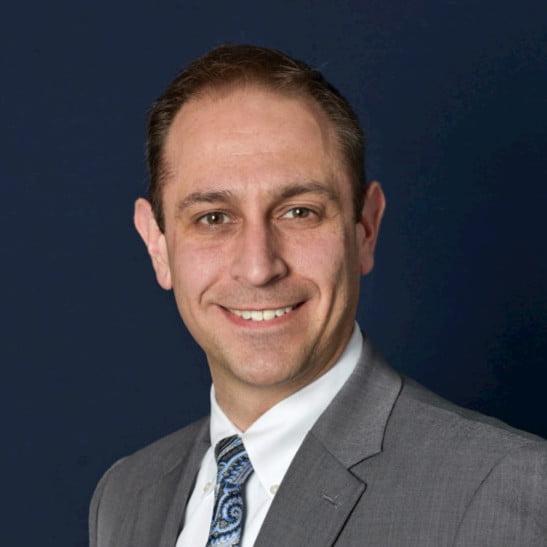The information on this website should not be considered medical advice.
This website contains affiliate links, and we may be compensated for referrals.
Congratulations on making your decision to attend medical school! While this is a long and arduous process, providing some insight into ways to afford your education are important in helping to ease the burden of understanding how you can make this a reality. As a potential candidate for medical school, there are several things you should know about how to get started in applying for medical school financial aid, and what resources are available to you.
Financial Aid Opportunities
FAFSA
To determine your eligibility for federal student aid, the student must submit a Free Application for Federal Student Aid, or FAFSA. The good news is that you may be familiar with this application as part of your undergraduate or any other graduate work you may have completed during your academic career. You can access the FAFSA by visiting https://fafsa.gov. There is a strong likelihood that you will be able to import your tax information into the application, but you should be aware of the materials you must have at the ready to adequately complete the form. The FAFSA is always free to complete.
You may remember from completing the FAFSA as an undergraduate that you were required to utilize your parental information. Since you are pursuing a graduate or professional degree, you will only be required to use the information of you and your spouse, if you were married/remarried as of the date you completed the FAFSA. For this purpose only, “married/remarried” does not mean living together unless your state of legal residence recognizes the relationship as a common-law marriage.
CSS Profile
Some institutions will require that you complete the CSS Profile, which is a secondary financial aid application that will assess your eligibility for institutional grants, scholarships, and loans. This application is located at https://cssprofile.collegeboard.org. There is also a set of materials that you should have prepared to complete this application, and there is a cost to complete the application.
When you submit your FAFSA (and CSS Profile) to the medical school of your choice, they will respond to you with your eligibility for sources of medical school financial aid. From the federal financial aid perspective, these will come in the form of Direct Loans and potentially other types of institutional awards to assist in funding your education. For those schools that use the CSS Profile, your desired school may provide institutionally offered scholarships or loans as additional sources of financial assistance.
Eligibility and Loan Types
Here is the breakdown of eligibility for federal student loans, as well as the types of loans available.
Federal Direct Unsubsidized Loans
Federal Direct Unsubsidized Loans are those non-need-based low-interest federal loans provided by the federal government. As an unsubsidized loan, interest will accrue on the loans while you are in school and interest will additionally capitalize until such time that you are no longer a full-time student or you have graduated. This means that the interest that accrues on your loans is rolled into the principal balance. For the most up-to-date interest rates and loan fees, check StudentAid.gov. Payments are not required while you are enrolled in school at least half-time, and for an additional six months after you graduate, leave school, or drop below half-time enrollment.
If you are in a graduate degree program (i.e., Physician Assistant), you are eligible to borrow up to $20,500 per year. If you are in a professional degree program (i.e., Doctor of Allopathic Medicine, Osteopathic Medicine, Dentistry, Veterinary Medicine, Optometry, Podiatric Medicine, Naturopathic Medicine, or Naturopathy), you may borrow up to $47,167 per year. Be aware that there is an aggregate limit to borrowing at the federal level, which is $138,500 for graduate students or $224,000 for medical professional students. These figures include any remaining balance of any federal borrowing from previous undergraduate or graduate programs.
Federal Direct Graduate PLUS Loans
Federal Direct Graduate PLUS Loans are another source of non-need-based low-interest federal loans provided by the federal government. Like the unsubsidized loan, this loan will see interest accrue and capitalize in the same manner. For the most up-to-date interest rates and loan fees, check StudentAid.gov. Payments are not required while you are enrolled in school at least half-time, and for an additional six months after you graduate, leave school, or drop below half-time enrollment.
The maximum you can borrow in this loan program is equal to the difference between your cost of attendance (provided by the school) and all forms of financial aid, including the Unsubsidized Direct Loan. This loan also requires a credit check to determine full eligibility and approval.
Private Student Loans
Private student loans are also available for those students who cannot or choose to not borrow from either of these federally provided loan programs. These types of loans are provided by banks or credit unions, and often provide a means to fill the gap between what you have been awarded in financial aid and any remaining costs. These loans are credit-based and carry variable interest rates typically tied to the rate of treasury bills and are dependent on the lender and your credit history. This means that these types of loans can be more costly than federal student loans. Your school may provide a listing of private lenders to assist you with your financing needs. It is best to contact your Financial Aid Office for assistance with private loan questions about interest rates and repayment terms.
Institutional Financial Aid
Institutional financial aid is that which may be provided to students through institutionally controlled funds and is dependent on the medical school you are attending. These may come in the form of grants, scholarships, or loans. While you may not have needed your parental information to complete the FAFSA, your medical school may wish to consider parental information in certain circumstances. Contact your medical school’s Financial Aid Office for questions about institution-specific financial aid opportunities.
About Borrowing Medical School Financial Aid
Both the Graduate PLUS loan and any private student loan will require a hard credit check to determine your eligibility and interest rate. If you have questions about your credit score and ways to improve, utilize personal finance resources such as Credit Karma or the Brigit App. You may also wish to monitor your credit report with Credit Nerd.
Your college will provide you with your loan eligibility based on the completion of the FAFSA and will provide you with the steps necessary to accept your loans and complete other requirements to receive them. Keep in mind that you are not required to accept the full amount of each loan. You are encouraged to borrow only what you need. Eligible expenses are those which are educationally related to attendance in your program, such as food, housing, transportation, insurance, and other miscellaneous costs.
Also, keep in mind that your loan funding may not become available to you until just before or during your period of enrollment. Be aware of when your funds will be disbursed, and plan accordingly if you may need to utilize or supplement with savings or other sources of funding.
Always speak with your Financial Aid Office for specific questions or concerns about borrowing medical school financial aid.
Loan Requirements for Federal Loans
- A Master Promissory Note (MPN) is the required legal document that borrowers are required to complete which promises the repayment of your student loan, including fees and any accrued interest back to the government. This document also provides you with your rights, responsibilities, terms, and conditions associated with your loans. There is an MPN for the unsubsidized loan, and a separate MPN for the Graduate PLUS loan.
- Entrance Counselingprovides both your rights and responsibilities as a federal loan borrower, as well as a review of the obligations associated with borrowing the loan(s). The areas of counseling include estimating your cost of education, how much you may expect to borrow, preparing for repayment, and what happens if you do not repay your federal loans.
- Exit Counseling is required to be completed when you leave school, graduate, or fall below a half-time enrollment status. This form of counseling acts as an affirmation of your obligations provided under the MPN.
Loan Repayment
Repayment of your federal student loans will begin six months after you withdraw, graduate from school, or fall below a half-time enrollment status. Students are initially placed into a Standard Repayment plan, which is 10 years in duration. However, there are other repayment options available to you. Always review your repayment options for federal loans, especially in times of economic hardship, by visiting StudentAid.gov.
You may also choose to utilize a loan repayment calculator to assist you in understanding your bottom line when you enter repayment.
While it may be early to think about loan repayment before you enter medical school, keep in mind that where you become employed may have an impact on any potential forgiveness of your federal student loan debt. If you are employed by a federal, state, local, or tribal government or not-for-profit organization, you may become eligible for Public Service Loan Forgiveness, or PSLF. The PSLF program will forgive any remaining balance on your federal Direct Loans after you have made 120 qualifying payments under a qualifying repayment plan while working for an eligible employer. For more information on PSLF, check out StudentAid.gov.
Resources
There are a host of scholarships that are available to supplement any funding awarded to you by your school, but it will take some work on your behalf. A recommendation if you are searching the web may be to use keywords, such as “Graduate Scholarships” or “Medical Scholarships.” FinAid.org provides a well-rounded space to generally search for scholarships relative to your background and type of education sought. ScholarshipAmerica and FastWeb are also viable sources of scholarships.
There are also more targeted areas to search for scholarships. These may be advertised or presented to you from your medical school or by researching on your own.
Here is a short list of scholarships for medical school that you might find helpful:
- American Medical Association – Physicians of Tomorrow
- Association of Physician Assistants in Oncology
- AvaCare Medical Scholarship
- EduMed’s Scholarship Central
- National Medical Fellowships
- Pisacano Leadership Foundation
- Pride Foundation
- Segal AmeriCorps Education Award
- Women in Medicine LGBTQ Leadership Scholarship
- National Health Service Corps Scholarship
Professional Organizations
There are also professional organizations that provide additional information related to funding your medical school education. Here are a couple of examples:
- American Association of Medical Colleges – Students and Residents
- American Medical Student Association
Always remember that your Financial Aid Office is always available to work with you on the application process, loan process, and especially your questions. Never be afraid to ask the Financial Aid Office your question.
Steven McDowell has been a financial aid administrator for more than 16 years. His book, Basic Guide to Financial Aid, builds a foundational understanding of the student financial aid programs and their processes to support officials in higher education.





Facebook Comments